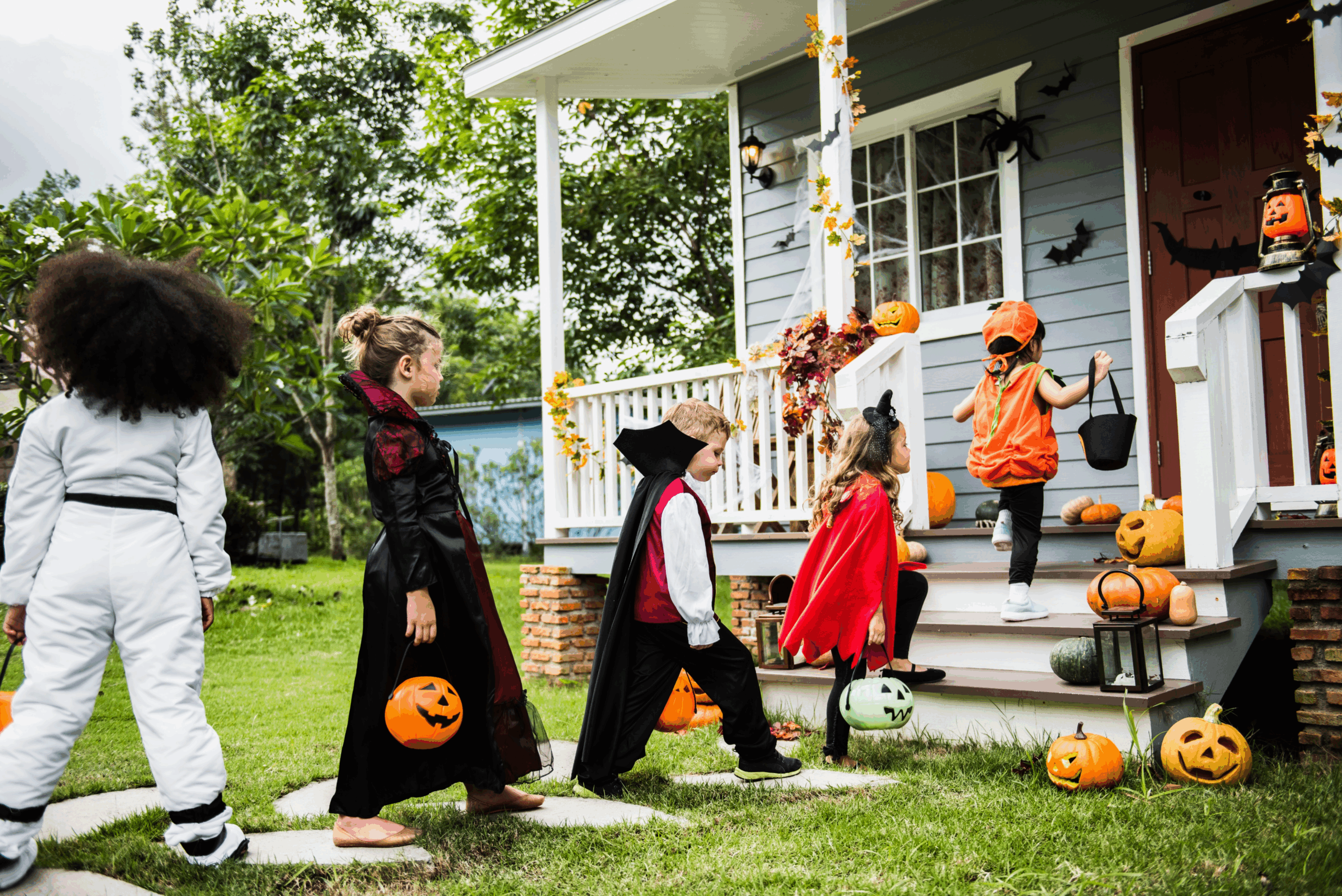
- October 17, 2025
- Center for Developmental Psychiatry
On the Psychology of Halloween Costumes
By Jason Dean, MD
Halloween costumes are a big deal. In fact, a quick google search reveals that Americans spent about 4 billion dollars on Halloween costumes in 2023. That’s a lot of costumes.
Every kid loves dressing up, but why is it so exciting?
Like with so many experiences, I believe there’s something deeper happening beneath the surface.
In this case, I believe it has to do with our desire to stretch ourselves and break through the barriers of what is possible, through fantasy.
We all have a relatively stable sense of self, with familiar boundaries of our capabilities, our flaws, and what is possible.
But what if we could be stronger, more potent, more capable?
I can’t fly, I don’t have billions of dollars, and I can’t shoot spiderwebs from my arms and swing between skyscrapers. But when I read a book or watch a movie with characters who are bulletproof and can leap over the tallest building, I can identify with those characters and, even if only for a brief moment, feel stronger and more powerful through that identification.
I don’t think it’s a coincidence that so many children dress up as their favorite fantasy characters.
Wearing a costume takes the identification to a new level. A child dressed as Spiderman is not simply watching a movie. In a way, they are actually becoming Spiderman.
When you consider that children’s ability to distinguish between reality and fantasy, called reality-testing, is already somewhat fuzzy, this fantastical identification gets ratcheted up a notch. A child, and especially a young child, may realize that they’re not actually changing their identity, but on some level they may not be 100% sure.
That’s the excitement. Can I shed my boring, small, weak identity and replace it with that of a hero with superhuman strength and ability? Is it possible? I think young children are not quite sure, but they’re hoping the answer is yes.
If I may, I might also suggest that something similar is occurring when children and adults don their favorite sports jersey.
Wearing a Mets or Yankees jersey among a group of others who are doing the same allows us to bond, join a community, and for a minute connect with an identity that is greater than ourselves. We’re not on the field, but in many ways we might as well be.
There’s another perspective that explains the fun and excitement of Halloween costumes. Donald Winnicott, a British pediatrician and psychoanalyst, described something called “transitional space.”
We each have an internal psychological world that exists within ourselves, and then of course there is also an external world. Then there’s a third space, called the “transitional space,” that exists between the internal world and external reality.
For instance, a child plays with a teddy bear, recognizing that it is part of the external world. After all, the teddy bear is separate from the child and is not part of the child. However, that child also adds all kind of fantastical elements to the teddy bear that stem directly from their internal psychological makeup. The teddy bear exists somewhere in the transitional space, it’s not inside, but it’s also not fully outside.
Some of our greatest creative and fun activities occur in the transitional space.
For instance, a musician performs a piece for an audience, and the music clearly exists in external reality.
However, the musician also imbues the music with their own interpretation and emotional emphasis that stems from their internal world.
Likewise, the audience members take in the music and experience an emotional reaction in-line with their own internal psychological makeup. In this way, a psychological dance takes place in the transitional space between the performer and the audience.
I think the same concept applies to wearing a Halloween costume. Everybody knows that in reality they’re not actually transforming into another personality. But that’s not the point. The point is that wearing a costume allows us to play in the transitional space between external reality (I’m a grown man wearing a cape), and internal reality (I’m Batman).
Winnicott pithily wrote, “We shall not ask the child ‘did you create that teddy or did you find it.’” Meaning, you’re not supposed to pop somebody’s bubble.
We don’t tell our children, “You know…you’re not really Wonderwoman.” Instead, we relish in their childhood fantasy that maybe they really are.
This Halloween season, I would recommend participating in the fun and childish fantasy of being more. I think it’s a wonderful opportunity to bond with children around their hopes, dreams, and fantasies.
Moreover, I think it’s so easy to get bogged down in the minutiae and power struggles in reality. It can be nice for a moment to immerse yourself with your child in fantasy for a bit.
Engaging in this type of fantasy play with children can help you form a great bond. It shows that you respect them and their aspirations. It shows that you’re willing to get on their level, rather than always bashing them over the head with reality.
I hope you can capitalize on the moment and create a meaningful experience for you and your children.
Thanks for reading,
Jason Dean, MD
If you or somebody could benefit from speaking with us, we are accepting new patients.
We see children of all ages, teenagers, and adults of all ages.
You can call us at 201-304-7552, or you can click the button below or this link to submit a form, and we’ll call you back.